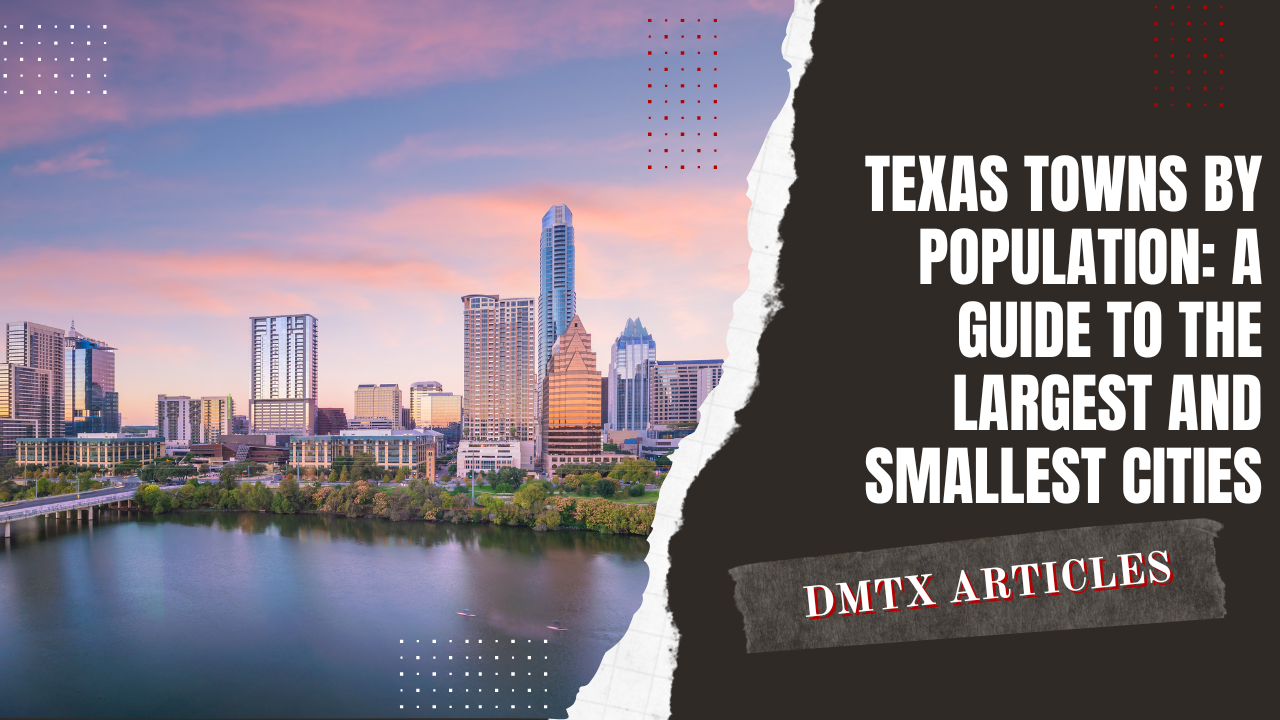Texas is a vast state with diverse towns and cities, each offering its own unique charm. Whether you’re considering a move or simply curious about where people live in the Lone Star State, this guide highlights the largest and smallest cities, what makes them special, and their role in the Texas real estate market.
1. The Largest Cities in Texas
When thinking of Texas, big cities often come to mind. Here are the largest cities by population:
- Houston: The largest city in Texas, Houston is known for its diverse culture and thriving job market in industries like energy and healthcare. Housing options range from modern downtown apartments to spacious suburban homes.
- San Antonio: Famous for the Alamo and the River Walk, San Antonio is rich in history and culture. The growing real estate market offers a mix of historic charm and modern convenience.
- Dallas: A major business hub with a strong economy, Dallas boasts a bustling downtown and impressive skyline. Its housing market includes everything from luxury high-rises to family-friendly suburbs.
2. The Smallest Towns in Texas
While Texas has its big cities, it also has plenty of small towns full of character. Here are a few of the smallest towns by population:
- Gustine: Home to about 400 people, Gustine offers a close-knit community and a slower pace of life, ideal for those seeking a quiet and friendly environment.
- Seymour: With around 2,000 residents, Seymour is known for its welcoming locals and small-town events. It’s perfect for those looking to escape the busyness of city life.
- Sierra Blanca: Located in West Texas with about 500 residents, Sierra Blanca offers peaceful desert landscapes for nature lovers seeking tranquility.
3. Texas Population Growth
Texas is experiencing rapid growth as more people move to the state. Cities are expanding, and new developments are emerging in smaller towns. This growth is reshaping the Texas real estate market, creating opportunities for buyers and sellers alike.
4. Texas Real Estate Market
The Texas real estate market is diverse. In large cities, you’ll find a wide range of housing options, from high-rise apartments to spacious family homes. Smaller towns offer more affordable options, often with larger lots. Population growth and economic opportunities are driving demand, making Texas an attractive market for real estate.
5. Texas Living Costs
Living costs in Texas vary depending on the area. Big cities like Houston and Dallas have higher housing costs, while smaller towns tend to offer lower costs of living, making them appealing for those seeking more budget-friendly options.
6. Texas Neighborhoods
Every Texas city has its own distinct neighborhoods. In Houston, you might find the artsy vibe of Montrose or the upscale atmosphere of River Oaks. Dallas offers lively areas like Uptown and more suburban communities like Prestonwood. Exploring different neighborhoods can help you find your perfect fit.
7. Moving to Texas
If you’re planning a move to Texas, it’s important to explore both the large cities and small towns. Each has its own unique benefits, from the excitement of big-city life to the charm of a quieter, smaller community. Understanding the local real estate market and living costs will also help you make the best decision for your new home.
Conclusion
Texas is a state of great diversity, offering bustling cities and charming small towns alike. From the largest cities like Houston and Dallas to the smallest towns like Gustine and Sierra Blanca, there’s something for everyone. By exploring these places and understanding the Texas real estate market, you can find the perfect spot to call home in the Lone Star State.


